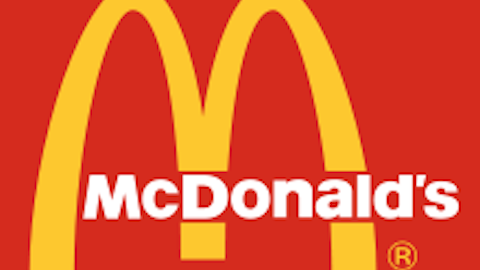Investors are always looking for new strategies to beat the market over time and build wealth to ensure their financial futures. Unfortunately, many investors get caught in overly complex investment strategies that end up losing them money over the long-term. One time-tested strategy that is both simple and extremely effective is the concept of dollar-cost averaging.
For buy-and-hold investors who understand the merits of slow-and-steady investing and the amazing power of compound interest, it’s entirely possible to build your financial future by dollar-cost averaging.
The beauty and simplicity of dollar-cost averaging
Dollar-cost averaging might seem like a complex investment strategy, but at its core, it’s very simple. Dollar-cost averaging means investing a given amount of money every month, regardless of what the market is doing.
One major benefit of the strategy is that it removes the dangerous temptation to time the market. Studies have statistically shown that those who try to predict the market’s direction, and frequently move money in and out of their portfolio, lose out over time. This is because of a variety of factors.
First, as much as we’d all like to think we can predict the future, none of us can. We are often simply wrong when we think that the market is about to make a big move up or down.
Secondly, frequently buying and selling stocks generates commissions that are paid to a broker. And, if the assets aren’t held in a tax-advantaged account, frequent trading generates taxable events that are paid according to a person’s short-term tax rate, which can be especially painful.
Stocks to make it worth your while
Stocks that pay dividends to shareholders are the best type of investments for the dollar-cost averaging strategy. These companies allow investors to build wealth slowly by pocketing those quarterly dividend payments. Investors can actually realize even greater rewards over time by reinvesting dividend payments, whereby you use a company’s dividend payment to buy more shares of the same stock.
Some of the market’s best dividend stocks are companies that we have all likely encountered at some point in our lives. For example, fast food juggernaut McDonald’s Corporation (NYSE:MCD) has been paying dividends for decades on end. Last year, McDonald’s Corporation (NYSE:MCD)’s returned $5.5 billion to shareholders in the form of dividends and share buybacks. The company increased its dividend 10%, and may do so again this fall. At current prices, the stock yields 3.20%.
Fellow Dow component Johnson & Johnson (NYSE:JNJ) is the gold standard of dividend payers. In April, Johnson & Johnson (NYSE:JNJ) provided investors with a 7% dividend increase to its current level of $2.44 per share, yielding 3.10% at recent prices. This marked the 50th consecutive year of a dividend increase, an enviable dividend track record most companies would love to have.
Last but not least, supplemental life and health insurance provider AFLAC Incorporated (NYSE:AFL) has an impressive dividend history of its own.
Although you can probably recognize the AFLAC Incorporated (NYSE:AFL) duck when you see it, what you might not know is that the vast majority of the company’s business is done far outside the United States. Interestingly, AFLAC Incorporated (NYSE:AFL) derived 78% of its revenue from Japan in 2012.
That being said, AFLAC Incorporated (NYSE:AFL) is a wonderfully managed company that remains committed to returning cash to shareholders. In 2012, AFLAC Incorporated (NYSE:AFL) raised its dividend for the 30th consecutive year, and the company plans to purchase $400 to $600 million of its shares in 2013. At recent prices, the stock yields approximately 2.50%.
The Foolish conclusion
Dollar-cost averaging is one of the best ways to consistently invest in a way that manages risk and builds wealth for the future. Whereas some investors may be tempted into actively trading their accounts, resulting in high portfolio turnover, there are many drawbacks to this. In short, taxes and commissions serve no purpose other than to take a big bite out of a portfolio’s rate of return over time.
The dollar-cost averaging strategy essentially times the market for you. A consistent investment, of say $500 per month into stocks, will buy more shares when the market is low and fewer shares when the market is high. Buy-and-hold, Foolish investors who understand the power of compounding interest over long periods of time should seriously consider dollar cost averaging into stocks, particularly the three blue chips presented here.
Robert Ciura owns shares of McDonald’s. The Motley Fool recommends Aflac, Johnson & Johnson, and McDonald’s. The Motley Fool owns shares of Johnson & Johnson and McDonald’s. Robert is a member of The Motley Fool Blog Network — entries represent the personal opinion of the blogger and are not formally edited.
The article To Protect Yourself Against Falling Markets, Consider Dollar Cost Averaging originally appeared on Fool.com is written by Robert Ciura.
Copyright © 1995 – 2013 The Motley Fool, LLC. All rights reserved. The Motley Fool has a disclosure policy.






